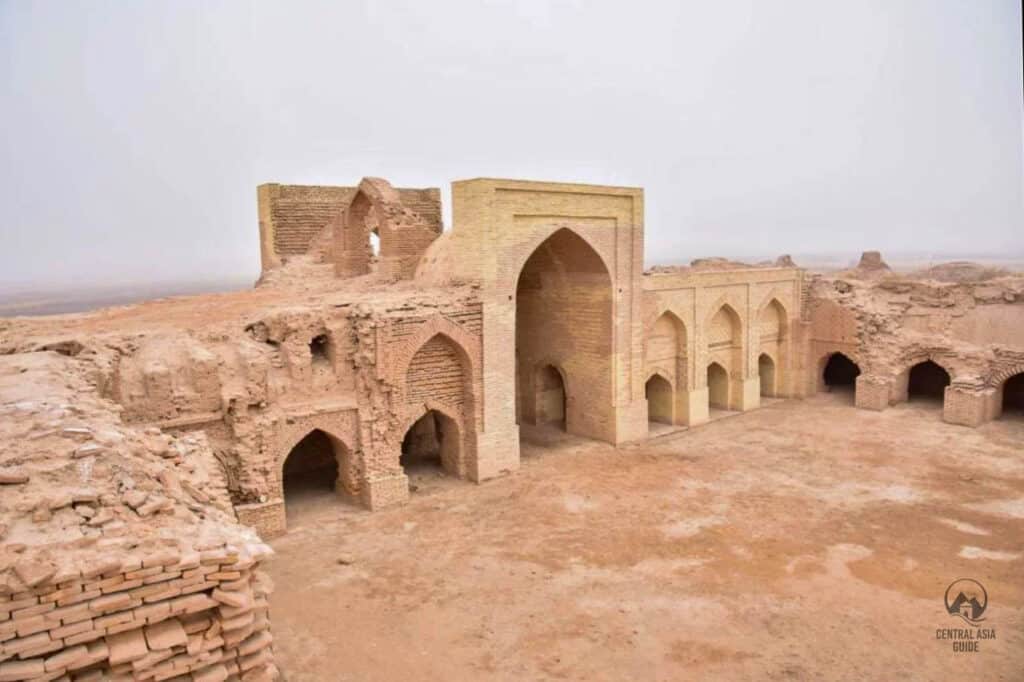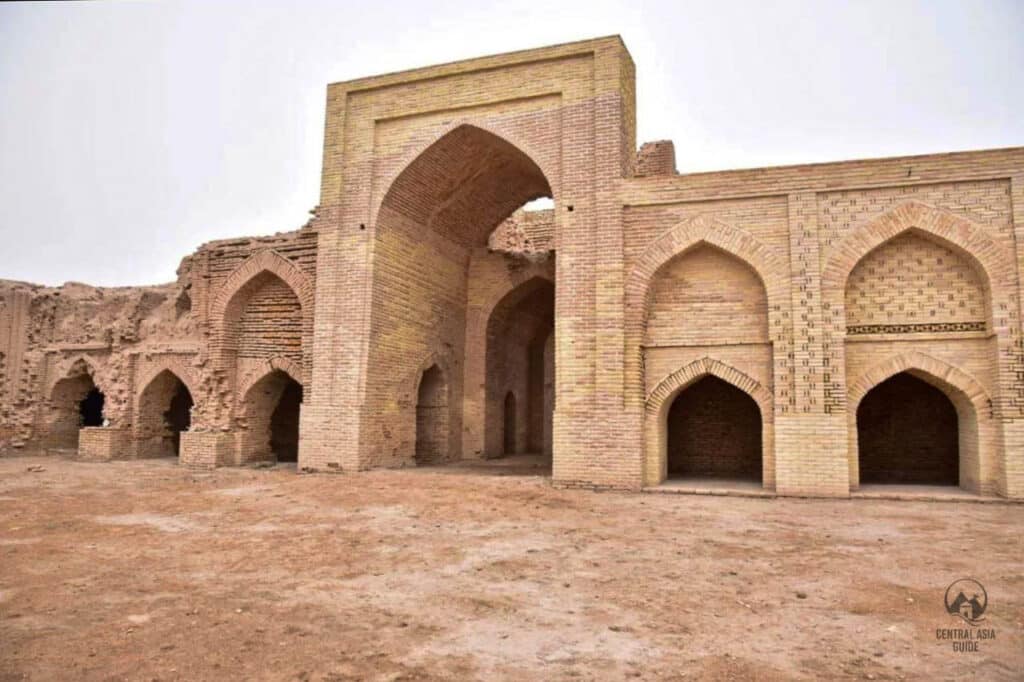Dayahatyn Caravanserai
DAYAHATYN CARAVANSERAI
Dayahatyn is a Silk Road caravanserai that stands on the ancient route between Amul (old name of Turkmenabat) and Khorezm and dates to around the 12th century AD, about 170 km to the north from Turkmenabat, by the shore of Amu Darya which marks the border between Turkmenistan and Uzbekistan. Even though the caravanserai has been abandoned around 500 years ago, most of the structure stands whole, although in a fairly ruinous state except for the lately restored part. So far Dayahattin is the best-preserved medieval caravanserai surviving in Turkmenistan and most likely in all Central Asia. It is believed that it was still in use in the 16th century.
This square shape caravanserai’s walls are 53 m long and the central courtyard is surrounded by brick arches heading into a vaulted arcade leading to the various small rooms. The main gate, which is an arched roof of fired bricks, is still in place on the eastern wall facing the river. The patterned decorations in which the bricks have been laid on the external east wall are unusually accurate. The outer defensive walls circling the caravansary are diminished and perhaps the pack animals would have overnighted in that area. You can go out of the central courtyard, surrounded by a vaulted arcade and small cells, and climb up on the walls while visiting Dayahatyn.


Dayahatyn Legend
Residents call Dayahattin Caravansaray Bayhattin, which translates as ‘Rich Woman’, and tell of a legend about the place that runs roughly as follows. There was a wealthy merchant living here, who had a beautiful wife, who was also desired by a friend of the merchant. The merchant departed on a trading trip, and the friend, seeing his opportunity, made advances to the wife. She was faithful to her husband and rejected the approach.
The amorous friend hooked up with an old lady for a cunning ploy. He secreted himself in a trunk, into which he had bored holes, enabling him to see out. The old lady told the wife that she needed to leave town for a few days, and could she leave the trunk containing her precious belongings in the wife’s safekeeping? The wife agreed. The unfriendly friend was thereby able to spy on the object of his affections and was able to notice a mole in her back as she undressed. After a couple of days, the old lady returned and took back her trunk. When the merchant returned, his ‘friend’ reported that his wife had been unfaithful, citing as evidence his knowledge of her mole. The humiliated merchant left immediately, to begin a new life as an itinerant tramp.
The merchant’s wife used her wealth to construct a glorious caravansary, which would be able to give refuge to those, like her husband, who wandered the desert. Bricks were brought from Merv for the new construction. By this time, the merchant, pining for his wife, had returned home. But he was still too proud to show himself, and worked as a humble laborer on his wife’s great project.
One day the wife recognized her husband but kept this fact a secret until the building was complete. On that day she held a great feast to mark the inauguration of the splendid new caravanserai, to which all those who had worked on its construction were invited. At the feast, the wife told a tale, intended to demonstrate to her husband the facts of her faithfulness and his friend’s trickery. Husband and wife were reunited. According to one more bloodthirsty version of the story, the couple then killed the merchant’s friend, whose body lies now in the graveyard next to the caravansary.
Dayahatyn location
Sights and destinations near Dayahatyn
Page updated 3.3.2024